Phylum: Chordata
Length: Asian elephant: 5.5 – 6.5 m
Lifespan: African bush elephant: 60 – 70 years, Asian elephant: 48 years, African forest elephant: 60 – 70 years
Mass: African bush elephant: 6,000 kg, Asian elephant: 5,400 kg, African forest elephant: 2,700 kg
Gestation period: African bush elephant: 22 months, Asian elephant: 18 – 22 months
Height: African bush elephant: 3.3 m, Asian elephant: 2.7 m
Elephant lifeNext generation
Male and female elephants become sexually mature between 8 and 13 years of age. Male elephants will leave their herd around this time, as long as they're able to find their own food and protect themselves, according to the Smithsonian National Zoo. Adult males either live on their own or in small bachelor herds.
Females may not have their first calf until their middle teen years, while males may not father a calf until they are in their 30s, when they are large and strong enough to compete with other males, according to the National Zoo.
Usually, only a single calf is born following a 22-month pregnancy. A newborn calf weighs between 150 and 350 lbs. (68 and 158 kg) stands about 3 feet tall. Calves also tend to be hairy with long tails and very short trunks.
Elephant calves grow quickly, gaining 2 to 3 lbs. every day in their first year, according to the San Diego Zoo. By the time they are 2 or 3 years old, calves are ready to be weaned.
Groups of elephants, or herds, follow a matriarchal structure with the eldest female in charge. Herds are composed of primarily female family members and young calves, according to the San Diego Zoo, and include 6 to 20 members depending on the food supply. When the family gets too large, herds often split into smaller groups that stay within the same area.
The matriarch relies on her experience and memory to recall where the best spots for food, water are, and where to find protection from the elements. The matriarch is also responsible for teaching the younger members of her family how to socialize with other elephants.
Elephants are very social and can communicate with one another and identify other elephants from distances of up to 2 miles using rumbling, low-pitched sounds that fall below the audible range of humans, according to the National Zoo.
TYPES OF ELEPHANTS & ELEPHANT HABITAT
1) There are numerous types of elephants found in Africa and Asia, with three distinct species and at least three subspecies. The African Bush Elephant (a.k.a. African Savanna Elephant) is the largest of them all: It’s actually the largest living terrestrial animal on the planet.
It’s also the most numerous of the elephant species, though it is increasingly vulnerable to extinction due to habitat loss and poaching. As their name implies, most of these animals are found in the bush or savanna, but some have adapted to inhabiting the Namib and Sahara deserts. These desert-dwelling elephants are not considered a distinct species.
2) The African Forest Elephant was formerly considered a subspecies of the African Bush Elephant, but it has since been reclassified as a distinct species that was separated 2 to 7 million years ago. They’re smaller and have more rounded ears and hairier trunks than their cousins, with a dwindling population of around 100,000.
As its name implies, this type of elephant prefers dense forest habitat, with most of them found in Gabon. They primarily feed on fruit (with leaves and bark making up the rest of their diet), and live in smaller, more isolated groups of 2 to 8 family members.
3) There are three different types of elephants that are currently classified as Asian Elephants– Indian Elephants, Sri Lankan Elephants, and Sumatran Elephants. But some studies also consider the Bornean Elephant as a fourth distinct sub-species. All are Endangered due to the destruction and fragmentation of important elephant habitat.
The Indian Elephant is found in 10 Southeast Asian countries, but the majority (around 30,000) are found in four areas of India. These include the foothills of the Himalaya mountains in the northeast and northwest, the central states of Odisha and Jharkhand, and the southern state of Karnataka.
4) The Sri Lankan Elephant is the largest of the Asian subspecies, measuring 6.6 to 11.5 feet tall and weighing 4,400 and 12,100 pounds. Sri Lanka has an impressive amount of elephants for such a small country (just 25,330 sq miles). In fact, studies suggest that Sri Lanka has the highest density of elephants in Asia.
But the country’s elephant habitat– mostly the lowland portions of the northern, eastern and southeastern dry zones– is dwindling rapidly, which is unfortunately leading to increasing human-animal conflict.
5) With an estimate of just 2,400 to 2,800 individuals left in the wild (an 80% decline over the last three generations), the Sumatran Elephant is by far the most critically endangered of the Asian subspecies. Around 70% of the Indonesian island’s potential elephant habitat (primarily canopied forest) has been destroyed in the last 25 years, which doesn’t bode well for hopes of future recovery.
Just 25 fragmented populations remain, with approximately 80% of their range outside of protected areas. Established in 2004 in the Riau Province, the 390-square mile Tesso Nilo National Park is one of Sumatra’s last forested areas that’s big enough to support a viable elephant population.
FACTS ABOUT ELEPHANTS’ PHYSICAL FEATURES
6) Bull Elephants (males) can grow up to 13 feet tall at the shoulders, measure up to 30 feet from trunk to tail, and weigh up to 14,000 pounds. Perhaps that explains why Elephants are the ONLY mammals that cannot jump!
7) An elephant’s trunk weighs around 400 pounds and contains around 100,000 different muscles. But, thanks to the elephants special physical features like finger-like appendages at the tip, they’re also nimble enough to pluck a single blade of grass.
8) Unless you’re ambidextrous, you probably prefer to use one hand over the other. Elephants are the same way about their tusks: Some are “lefties,” others are “righties.” They’ll favor that tusk when fighting other Elephants, picking things up, or stripping leaves and bark off trees. Because of constant usage, their preferred tusk gets shorter over time.
9) Elephants have highly developed brains, not to mention the largest in the entire animal kingdom. Their brain is 3 or 4 times larger than that of humans, although it is smaller in proportion to their enormous body weight.
10) Elephants have an extremely slow pulse rate, around 27 beats per minute. Compare that to the average human (80 bpm), or Canary (1000 bpm).
11) The elephant’s trunk, which is called a proboscis, contains 16 muscles. It’s very similar to that of their ancient ancestors, the mammoth and mastodon, with a large muscle on the top and sides of the trunk allowing elephants to raise it. There are also thousands of smaller muscle fascicles, or bundles of muscle fibers, that allow for finer movements of the trunk.
12) Elephants are incapable of jumping, but these massive mammals can run at a maximum speed of 25 miles (40 km) per hour. Yet even when they are moving at their fastest, they still keep at least one foot on the ground at all times.
13) Asian elephants have one more toenail on each foot than African elephants. Asian elephants have five toenails on the front feet and four on the back feet, while African elephants have four on the front and three on the back.
14) If you’ve ever seen photos of a baby elephant, you know that their bodies are covered in short hair. The growth of this hair reduces over time, as they age. Unlike the hair on most mammals, the hairs on an elephant aid in cooling down its body in the hot climates of Africa and Asia.
15) In comparison to their African counterparts, Asian elephants have much smaller tusks. The tusks on many female (and sometimes male) Asian elephants, which usually measure just one or two inches in length, are called “tushes.”
16) The skin of an elephant may look more wrinkled than your 80-year-old granny. But it actually helps to keep their skin healthy by holding in moisture. After they take a mud bath, the moisture of the mud remains in the wrinkles to continue softening the elephant’s skin.
17) If you’ve ever been up close to an elephant, you may have noticed their incredible eyelashes, which can grow up to five inches in length. Studies have shown that the the ideal length for eyelashes is approximately one-third of total the length of the eye, which helps to prevent the eyes from drying out.
18) Elephants have incredibly poor digestion, with only 50% efficiency. As a result, they release an incredible amount of gas (methane) and produce around 250 pounds of manure a day!
INTERESTING FACTS ABOUT ELEPHANT COMMUNICATION
19) Elephant skin is over an inch thick. But because it’s loaded with nerve endings, their skin is also highly sensitive. Elephants from the same herd will often use touch to greet each other, either wrapping their trunks around each other or giving each other friendly “hello” taps on the body.
20) In addition to the familiar trumpet blast sound they’re known for, Elephants also purr much like cats do.
21) Research has shown that Elephants communicate over long distances using a sub-sonic rumble that can travel over the ground faster than sound through air. Other Elephants receive these messages through their feet and trunks. Scientists believe that this is how potential mates and social groups communicate with each other.
22) Elephants are highly sensitive and caring animals. If a baby Elephant complain, the entire family will go over to touch and caress it to soothe it.
23) Elephants often pay homage to the bones of their dead, gently touching their skulls and tusks with their trunks and feet. When an Elephant walks past a place where a loved one once died, it will stop in its tracks. This silent pause often lasts several minutes.
24) Elephants are highly intelligent animals, and studies have shown that they possess a variety of complex emotions and feelings, including deep compassion and surprising self-awareness. Like humans, elephants have large cortexes in their brains and are not born with survival skills. They have to learn these skills from older elephants in the early years of their lives.
AMAZING FACTS ABOUT ELEPHANT BEHAVIOR
25) Elephants have deep family bonds and tight-knit groups of related females and their offspring. Each herd consists of anywhere from 8-100 Elephants, all led by the oldest (and often largest) matriarch. When a calf is born, it’s raised by the whole herd. Males usually leave the herd between the ages of 12 to 15, living solo or temporarily hanging out with other males.
26) You know how they say “an Elephant never forgets”? Research has proven that they are extremely intelligent. And their memories are vital during the dry season, when matriarchs guide their herds– over for countless miles– to watering holes they’ve visited in the past.
27) Elephants are herbivores and need to consume 300-400 pounds of food per day. In additions to grasses, leaves, bamboo, bark and roots, they also known to eat crops like banana, sugarcane and– the African Elephant’s favorite– sweet marula fruit.
28) Elephants can give birth until they’re 50 and an Elephant’s life expectancy is 60- 70 years old. The oldest on record– an Asian Elephant named Lin Wang– died at the ripe old age of 86.
29) In addition to smelling, trumpeting, drinking and grabbing things, Elephants can use their trunks to breathe (like a snorkel) in deep water. In this way, they can swim fairly long distances.
30) Elephants must migrate seasonally in order to find food, relying on their memories of previous food and water supplies (hence the old saying, “an elephant never forgets”). They will also migrate to avoid poachers and other threats, even moving during the night to avoid traveling during the daytime, when poachers are most active.
31) On average, elephants spend about 16 hours of each day eating everything from grasses, small plants, and bushes to fruit, twigs, tree bark, and roots. Part of the reason they eat so much for so long is because they ultimately digest very little of the food they eat. So they need to consume more food in order to ensure they are properly nourished.
32) While they’re migrating in search of food, elephants spread seeds around the land where they have eaten, making them an important part of their ecosystems. After eating, seeds are released through elephant dung. One South African study found that elephants are capable of transporting these seeds up to 40 miles!
33) In addition to eating massive amounts of food, adult Elephants drink 30-50 gallons of water every day. They use their trunks like a massive straw to suck the water up, but then they actually squirt it into their mouths to swallow it. During the dry season they’ll dig to find water, making huge holes in seemingly dry stream beds with their feet, trunks, and tusks until they reach the water supply. In this way, they also create watering holes for other animals to drink from.
34) Elephants are known to be social creatures, and female elephants in particular. Elephant herds are matriarchal, with older females taking turns taking care of the calves and protecting them while traveling from place to place.
35) The family structures of Asian elephants are somewhat smaller than those of African elephants, which often number up to 25 individuals. Depending on the availability of food, elephant families can split into smaller units.
36) Elephants grieve when one of their herd dies. Due to the way their brains are structured, elephants display some remarkably human like emotions, showing sadness and grief and mourning the loss of family members long after they have passed on.
READ MORE: 60 Weird Animals Around The World
FACTS ABOUT ELEPHANT CONSERVATION
37) In the early 1900s African Elephant populations were estimated to be in the millions, while there were around 1oo,000 Asian Elephants. According to World Wildlife Fund, today there are around 700,000 African Elephants in the wild, and just 32,000 Asian Elephants.
38) In 1989, CITES (Convention on International Trade in Endangered Species of Wild Fauna and Flora) banned the international ivory trade. Yet poaching for ivory has been steadily increasing, with 800,000 African elephants killed over the last three decades.
39) An Elephant’s tusk can weigh up to 22 pounds. Each one is worth $10,000-$15,000 on the black market in Asia, where they are used to make everything from billiard balls and piano keys to chopsticks.
40) In addition to poaching, habitat loss and conflict with human populations are key threats facing Elephant populations. Climate change projections suggest key Elephant habitat will become hotter and drier, so poor foraging conditions may threaten the survival of more calfs in the future.
41) Most Asian Elephants used in the logging and tourism industries (including those offering rides, performing in circuses, or painting in the streets) have been tortured in a horrifically cruel training regiment known as phajaan. The process involves tying a wild Elephant up for several days, beating them into submission, and leaving them to starve, with the goal of crushing their spirit.
42) Because they migrate for food according to the seasons, elephants need quite a lot of room to move around and find their food. Not having enough space is detrimental to elephants.
43) Even though measures have passed aimed at reducing the poaching of elephants for their ivory (which is worth up to $1500 per pound), these animals are still being poached at a faster rate than they can reproduce. Their slow rate of reproduction also contributes to their dwindling population numbers.
44) In 1989, the U.S. Congress passed the African Elephant Conservation Act, which was aimed at improving elephant African elephant populations. Parts of the act include reducing the ivory trade and supporting African conservation efforts. Unfortunately, the Trump administration reversed a ban on elephant trophy imports in 2017, saying that hunting African elephants in Zimbabwe and Zambia “will enhance the survival of the species in the wild.”
45) Elephants are instinctively afraid of bees. Wildlife conservationists have used this natural fear to the elephants’ advantage by placing beehives near farms in order to prevent elephants from foraging in those areas. This approach seem to be helping to minimize incidents of human-elephant conflict.
FUN FACTS ABOUT ELEPHANTS
46) Elephants have the longest pregnancy in the animal kingdom, lasting 22 months from conception to birth. Elephants can give birth every three to four years, but will typically only have four calves in their lifetime.
47) Elephants have four molars– two on top and two on bottom, located on the side of their mouths. Each molar weighs around five pounds and is the size of a brick. They can only grow 6 sets of molars over their lifetimes. When the last set is lost, the animal is unable to eat and eventually dies.
48) Here’s a fun fact about Elephants, if you’re on safari and see an Elephant lift its trunk in your direction, it’s probably smelling you. Elephants have terrible eyesight, but a very keen sense of smell.
49) Elephants have large, thin ears that contain a complex network of blood vessels that help to regulate body temperature. The average ear of a male African Elephant weighs over 100 pounds.
50) All baby Elephants are born blind, but they can stand up almost immediately.
READ MORE: Endangered Elephants of East Africa
51) All baby Elephants are born blind, but they can stand up almost immediately.
52) We’ve all seen the videos of Elephants playing in the water. It’s not only fun for them, but it also provides health benefits. The buoyancy they experience when swimming gives their leg joints a much-needed break.
53) An Elephant’s tusk will continue to grow throughout its lifetime. An adult male’s tusk will grow about 7 inches each year on average.
54) Despite the massive size of their feet, elephants actually walk on their toes! In studies of their walking patterns, researchers have found that elephants put the most pressure on the outer toes of their front feet and the least amount of pressure on their heels.
55) African elephants are divided into two subspecies: savannah (bush) and forest. Savannah elephants are larger, with curved tusks, while forest elephants are smaller, with tusks that are straighter and point downward.
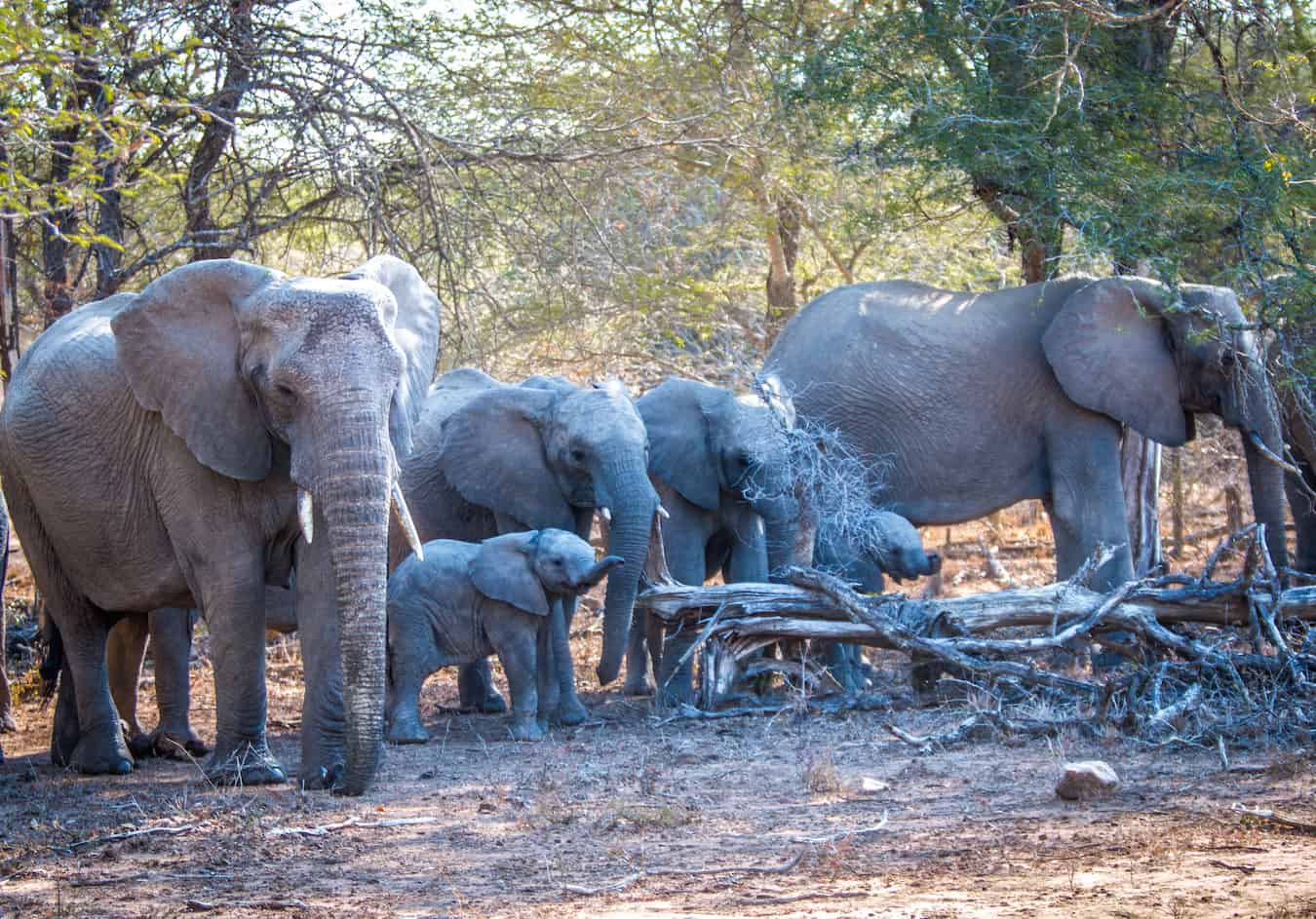
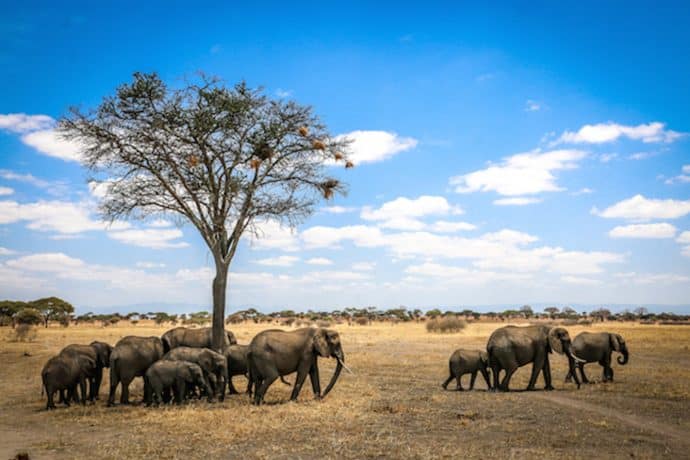

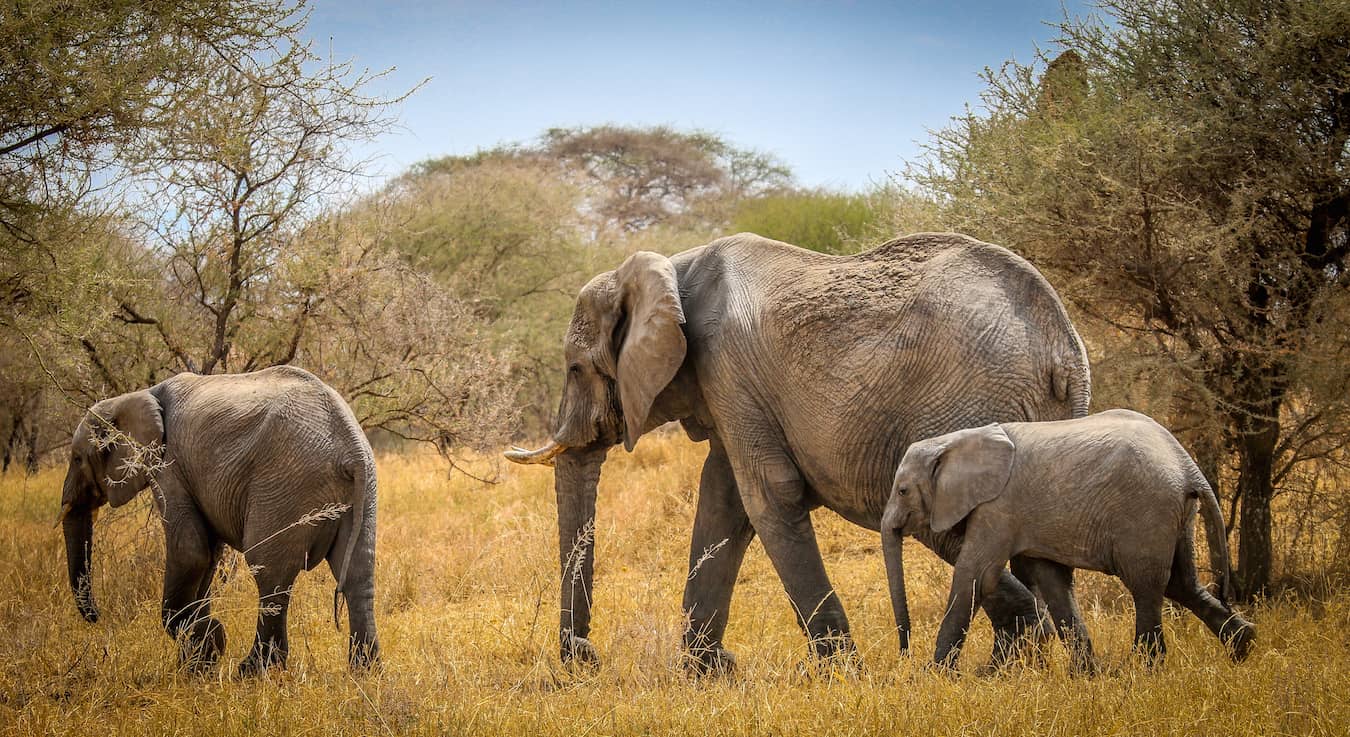
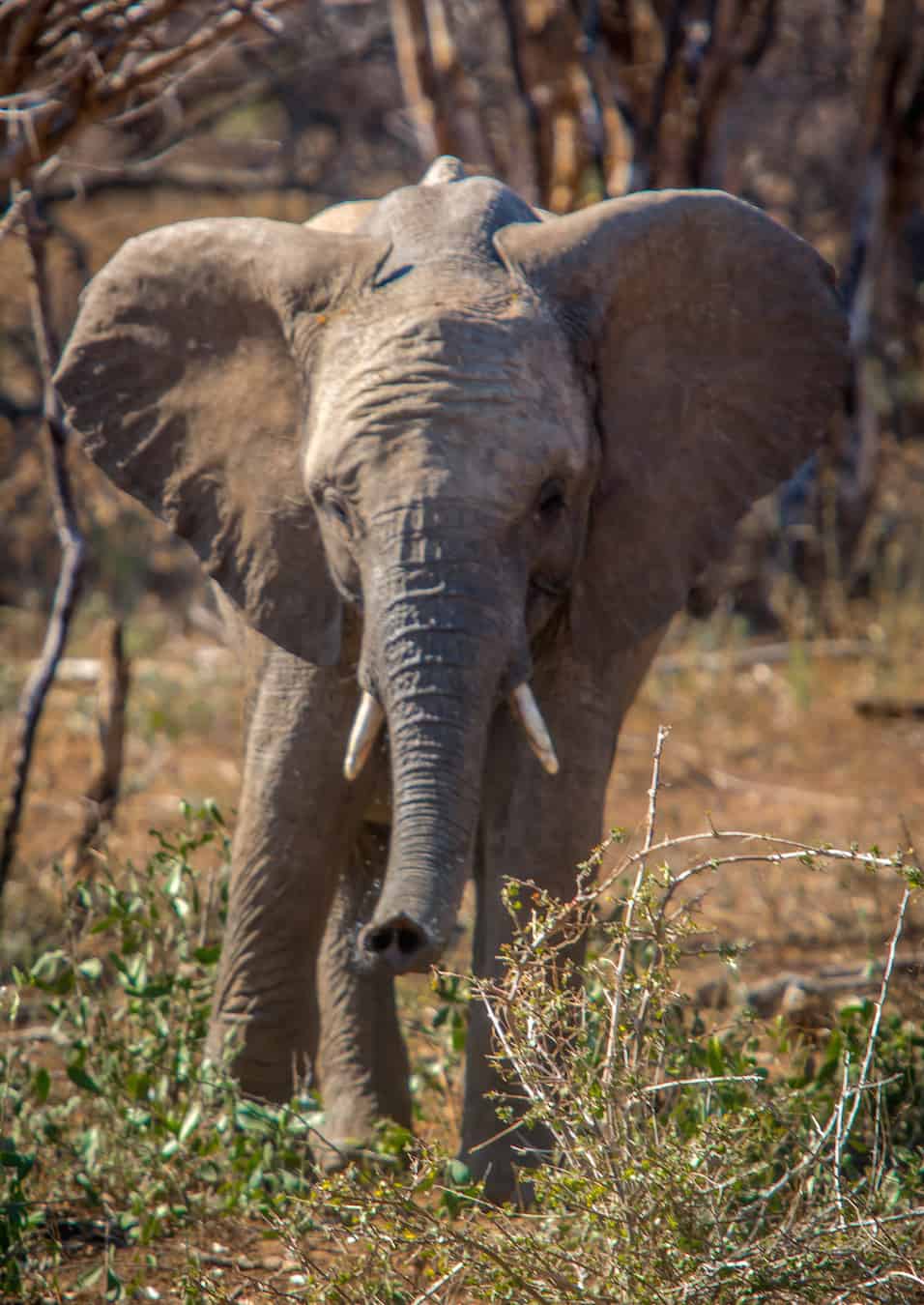
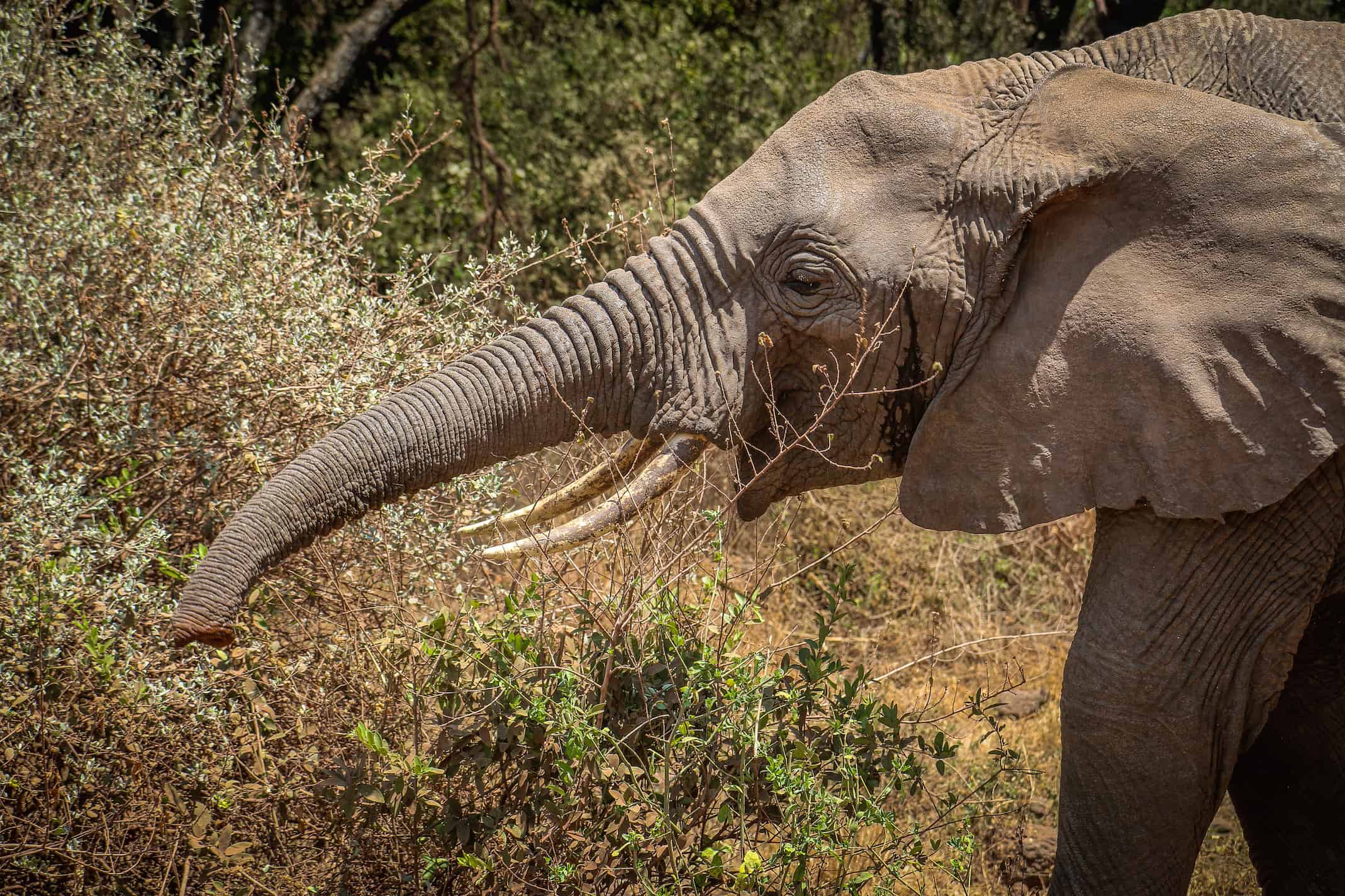

No comments:
Post a Comment